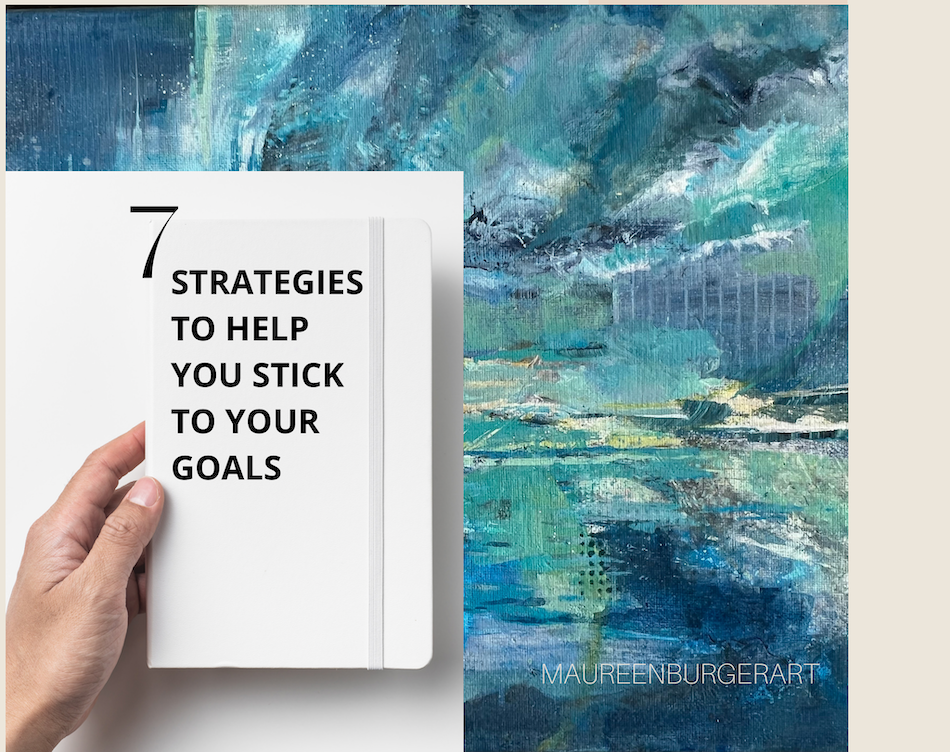7 Strategies to Help You Stick to Your Goals
Even if you have been a quitter in the past, these research-backed tips will be just what you need. Be inspired!
January is typically a time for fresh starts. However, perhaps last year’s resolutions have been too ambitious or unrealistic.
1. Start with a Goal That is Important to You
What do you really want for yourself? Resolutions are often about what others want for us; it is difficult to make those stick. Marcia K. Morgan, Ph.D., a psychologist in Bend, Oregon, and author of Go! How to Get Going and Achieve Your Goals and Dreams at Any Age states: “Ask yourself if this is something you really want to do for yourself, or because you think that society, your friends, your partner, or your parents think you should do?”
“If you choose a goal for external validation rather than because it aligns with your values, it’s usually a harder mountain to climb.” Boston-based psychotherapist Angela Ficken, L.I.C.S.W.
2. Make the goals manageable
A secret to achieving a goal is to break It down into smaller segments or chunks. Create specific small goals with a time schedule.
I am planning to paint 4 days a week for at least 3 hours per day. I could add…to do this for the month of February. Then in March I could re-evaluate and add hours or make changes. Each small goal helps you build the confidence to move on, Ficken says.
If you get off-track, don’t feel like you’re going back to zero. You can simply return to your plan or to the last level you achieve. Don’t have a negative mindset that you are starting over.
3. Make the Goal Fit Your Lifestyle
Be realistic. Consider your day-to-day circumstances. There are some things you can’t change and it may feel like your life is conspiring against you. You may need to think creatively. For example, if you resolve to read more, but you work long hours and then tend to fall asleep as soon as you climb into bed with a book, consider alternatives that reach the same goal, Ficken says.
Using a photo I took at Washington Crossing State Park, I painted this landscape. It’s on my website, along with other landscapes and seascapes.
Yes, I should set a goal to read more, but for now, other things occupy my time.
I have stacks of books to read. Sometimes you need to prioritize. I am choosing painting and working on my art business. This painting is on my website in the floral/botanical shop.
“Work with the bandwidth you have,” she says. “If the goal of reading was to learn more about the world, then consider listening to podcasts or audiobooks on your commute to work.”
I have travel plans and realize that I will be gone for some weeks. With this in mind, I will be packing a small art kit so that I could continue doing some small sketches. My beautiful surroundings will provide innumerable photo opportunities and I always love taking more photos than the average traveler. These photos are great resources for art. Check back: I will be using some of my travel photos for my art.
4. Create Specific Goals
Instead of “I’m going to update my living room” change the vague intention to specific ways to achieve it. Such as, “This month I will research styles of sofas at {these 3} furniture stores. After dinner, I’ll read articles on current interior design trends, and view artist websites for affordable art for the walls (of course; maureenburgerart.com. Look no further! 😄 ) “I’ll take notes of what I like.”
This is photo of a still life painting, Gladiola, Pears and Preserves available on my website In the shop “Still Life and Birds”.
A goal like, “I’m going to help my aging parents more,” is vague. But by being more specific when setting your intention, such as choosing a day and time to focus on it—“Every Tuesday evening, I will help Mom send emails and pay the bills”—you're less likely to slack off, Morgan says. “Having that structure really helps you stick to your goals.”
5. Find Yourself a Goal Object
Morgan says this tactic takes the concept of a vision board to the next level. Whatever your goal is, find something small that represents it.
For example, It can be a seashell to remind you to save money for a trip to the beach. Perhaps it can be a keychain with a pair of tiny ballet slippers on it if you want to learn to dance, ( I dance) or a small toy airplane if you want to travel more. Then, put it in a spot where you will see it every day, Morgan suggests. Also, take a few seconds each day to mindfully hold the object.
“Research shows that the more you visualize your goal, the more likely you are to achieve it,” Morgan says. “The object stimulates a visualization, and then the visualization stimulates the thought, and then the thought stimulates the action. It’s like your North Star guiding you.”
Art on your wall can also provide a visual cue, such as seeing the feathers, as in the collage here, or a bird painting to remind you to fill your bird feeder consistently, or to get out to enjoy nature.
Flowers, Feathers, and Spirals. Original collage with acrylic paint on watercolor paper
Pastel painting of a Blue Tit Bird (framed original art & more like this) available on my website.
6. Do a Monthly Check-In to Reassess
You may find that your resolution has become difficult to maintain. Consider what you can change up to make it better. Give yourself options. If you want to get fit and you are bored with your weight training, try online yoga or a sport.
7. Take a Break If You Need It
If you skip one day, or even one week of your plan, you can always start again! You just need to give yourself permission and make a specific plan for getting back on track. “If you feel mentally, emotionally, or physically exhausted, or you just have a really busy week, it’s okay to say, ‘I just need to get my work done and see my friend, and I will start up again next Monday,” Ficken says.
Sometimes you need to refuel your body and soul and then go back to your plan with renewed energy and determination.
Credits and links to sources:
The Quitters Guide to Goal-Setting By Marisa Cohen From happify.com
GO! How to Get Going and Achieve your Goals and Dreams teaches women and girls in four guided steps, how to select and display special objects that represent their goals. Through mindfulness, repetitive visualization and tenacious planning, the Goal Objects (GO!) become an empowering compass to keep a woman on the path towards her goals.” Book overview. Barnes and Nobles.











